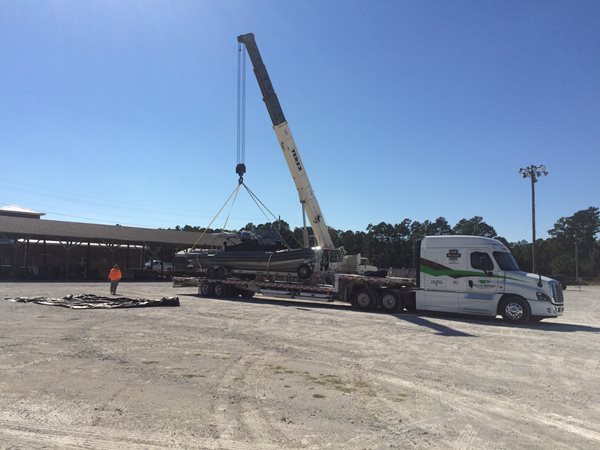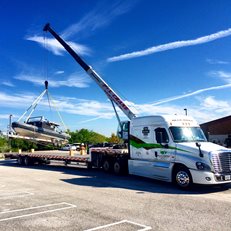Last week, I had the opportunity to transport a boat on a trailer from Florida to North Carolina. The entire load only weighed around 12,000# so I thought only a minimum number of tie downs would be necessary based on the weight....WRONG!

Sometimes, the lighter loads are the more difficult to secure, especially when they roll and don't have a parking brake. I was very meticulous in securing this boat and ensuring it wasn't damaged by my chains and straps. More importantly, I didn't want it coming off my trailer as I hit the potholes that make up most of I-95 in South Carolina! (Had to get a jab in there to SC)
I used 4 chains with the direct tie down method which was enough strength to secure a 26,000# item alone, then I used two lasso wheel straps on the rear tires of the back axle plus three more winch straps with the indirect method which was strong enough for 30,000# alone. Needless to say, the boat didn't budge on the 650 mile journey.

One thing I've noticed is that a lot of times, the lighter loads pay better than the heavier open deck loads. The heavier loads are usually commodities like lumber or steel that aren't usually needed in a rush, but to maintain a constant supply of raw materials for production at the consignee. The better paying open deck loads usually don't go to a manufacturing facility, but go to job sites or other special circumstances with added difficulty. These are usually higher paying and lighter which allow me to obtain higher fuel mileage and thus really add to the bottom line!